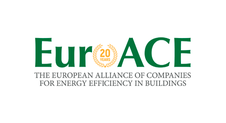Search eceee proceedings
How much demand-side flexibility can a community deliver? A multi-agent modeling approach
Panel: 5. Smart and sustainable communities
Authors:
Inês Reis, INESC Coimbra, Portugal
Marta Lopes, ESAC - IPC and INESC Coimbra, Portugal
Carlos Henggeler Antunes, Department of Electrical and Computer Engineering, University of Coimbra and INESC Coimbra, Portugal
Ivo Gonçalves, INESC Coimbra, Portugal
Abstract
The on-going transformation of energy systems into a decentralized renewable-based model, in which end-users have a more active role, brings new challenges that need considering energy systems at a community scale. Energy communities have gained momentum as promoters of collective actions to generate, store, manage and trade local energy, allowing their members to increase their energy autonomy with potential savings and environmental benefits.
Research on energy communities has mostly focused on households and urban areas that have been modeled as purely residential, although they also include services, industry and cross-sectoral activities, with their own characteristics and energy consumption patterns. The annual demand of services and industry is similar to the residential sector, but their load profiles are noticeably distinct.
This paper proposes a multi-agent modeling approach to exploit the influence of demand-side flexibility of different activities within an energy community. This type of modeling is adequate for the representation of socio-technical systems as is the case of energy communities, in which members may play different changing roles over time in function of interactions with other members and the environment. Special emphasis is given to the behavioral dimension associated with agents’ decision processes and preferences such as comfort and cost thresholds.
Agents included in the model and their roles are as follows:
• Grid agent: provides the energy required by community members and buys the excess of energy produced by the community.
• Residential agents: prosumers and consumers are represented by distinct agents with different consumption profiles and flexibility patterns regarding electricity cost and comfort. All prosumer agents have photovoltaic generation and may have storage systems (static or EV batteries). Generally, the prosumer agent prefers to consume from his resources (generation and storage). In surplus generation scenarios, prosumers may negotiate with the coordinating agent to sell energy to the community. Consumer agents prioritize the purchase of energy from the community instead of the grid and may use EV battery when cost thresholds are exceeded or community availability is compromised.
• Service sector agents: represent a primary school, a restaurant and an office building. Data from ventilation, space cooling and heating, lighting and equipment are included in the model. Since some energy services (as lighting) would be difficult to manage without jeopardizing quality of service, only ventilation, space heating and cooling and some equipment flexibility are exploited.
• Public lighting agent: requires community resources to meet the community lighting service. In case of resource shortages, a dimmable profile is displayed requiring less resources.
• EV charging station agent: also requires community resources. In case of abundance of resources, fast charging is provided. In resource shortage periods, slow charges are provided.
• Coordinating agent: manages the available demand-side flexibility while interfacing with the power grid. It forecasts the prosumers and community generation status and grid purchase prices for the next 24 hours. It optimizes prosumers and consumers load flexibility to offer resources to the remaining community agents.
Self-sufficiency indexes are created to quantify how much energy demand can be locally supplied through different generation scenarios. The revenues obtained through energy transactions within the community and between the community and the grid are quantified. The results show the impact of synergies of demand-side flexibility of the different activities according to economic, technical and environmental indicators.
Acknowledgement:
This work was partially supported by project grants UID/Multi/00308/2019, ESGRIDS (POCI-01-0145-FEDER-016434), MAnAGER (POCI-01-0145-FEDER-028040) and EfS-UCoimbra.
Downloads
Download display as pdf: 5-056-19_Reis_display.pdf
Panels of
1. The dynamics of limiting (energy) consumption
2. What's next in energy policy?
4. Monitoring and evaluation for greater impact
5. Smart and sustainable communities
7. Make buildings policies great again
8. Buildings: technologies and systems beyond energy efficiency
9. Improving energy efficiency in ICT, appliances and products

























